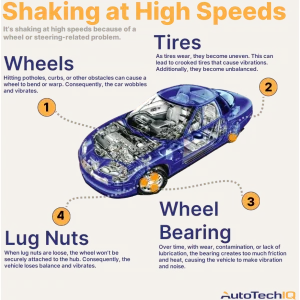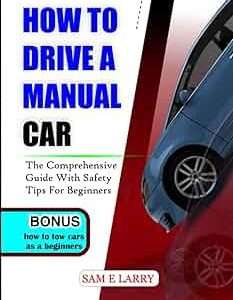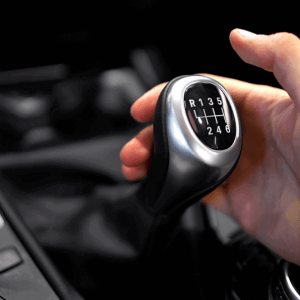The idea of a manual transmission in an electric car might seem counterintuitive at first․ Electric motors deliver instant torque, often negating the need for multiple gears․ However, some argue that a manual transmission could enhance driver engagement and potentially improve efficiency in certain scenarios․ This article explores the possibilities and challenges of combining these two technologies․
Why Consider a Manual Transmission in an EV?
Several reasons could motivate the inclusion of a manual gearbox in an electric vehicle․ It’s not just about nostalgia; there are potential benefits․
- Driver Engagement: For enthusiasts, the act of shifting gears is a key part of the driving experience․
- Efficiency Optimization: In theory, a manual transmission could allow drivers to select the optimal gear for specific driving conditions, potentially improving energy efficiency․
- Regenerative Braking Control: A manual transmission could offer more granular control over regenerative braking, allowing drivers to fine-tune the level of deceleration․
It’s a complex issue with no easy answers․ The benefits are debated, but the potential is there․
Challenges and Considerations
Implementing a manual transmission in an EV presents several engineering challenges․ The instant torque of electric motors can be difficult to manage with a traditional clutch and gearbox;
Clutch Durability
The high torque output of electric motors could lead to premature clutch wear․ Robust clutch designs and sophisticated electronic control systems would be necessary․
Gear Ratios
Determining the optimal gear ratios for an electric vehicle with a manual transmission would require extensive testing and simulation․ The goal would be to balance performance, efficiency, and driver experience․
FAQ: Manual Transmission EVs
The concept of a manual transmission electric car remains a niche idea․ While it might appeal to driving enthusiasts, the practical benefits are questionable․ As electric vehicle technology continues to evolve, it’s possible that we’ll see more experimentation with different transmission types․ However, for now, the focus remains on single-speed transmissions and advanced motor control systems․
The future is electric, but the question of whether it includes manual transmissions remains open․ Only time will tell․
Future Trends and Alternatives
While a traditional manual transmission might not be the most practical solution for EVs, alternative approaches are being explored․ These aim to provide a similar level of driver engagement without the drawbacks of a conventional gearbox․
Simulated Gear Shifts
Some manufacturers are experimenting with simulated gear shifts, using software to mimic the feel and sound of a manual transmission․ This can provide a more engaging driving experience without the added complexity and weight․
Multi-Speed Transmissions
Instead of a full manual gearbox, some EVs are using two-speed or three-speed transmissions to improve efficiency at higher speeds․ These transmissions are typically automated, but they offer a wider range of gear ratios than a single-speed setup․
Food for Thought: Could haptic feedback on the accelerator pedal be used to simulate the feeling of shifting gears? This could offer a more immersive experience without requiring a physical clutch or gear lever․
- Dual-motor systems with different gear ratios for each motor․
- Continuously variable transmissions (CVTs) adapted for electric powertrains․
- Advanced torque vectoring systems that mimic the effects of gear changes․
The possibilities are endless, and innovation is key․ The automotive industry is constantly pushing the boundaries of what’s possible․
The Enthusiast’s Perspective
For many driving enthusiasts, the connection between driver and machine is paramount․ The act of shifting gears, feeling the engine rev, and precisely controlling the car’s power delivery is a fundamental part of the driving experience․ While electric cars offer instant torque and smooth acceleration, some argue that they lack the visceral engagement of a traditional manual transmission car․
The question is whether this engagement can be replicated or replaced in an electric vehicle․ Simulated gear shifts and other technologies may offer a partial solution, but they may not fully satisfy the purists․ It’s a matter of personal preference and what each driver values in their driving experience․
Consider This: The sound of an engine is a crucial part of the driving experience for many enthusiasts․ Could artificial engine sounds be used to enhance the engagement of an electric car with a simulated manual transmission?
Ultimately, the success of any attempt to replicate the manual transmission experience in an EV will depend on how well it captures the essence of what makes driving a manual car so enjoyable․
The Future of Driver Engagement
The automotive industry is at a crossroads․ As electric vehicles become more prevalent, the traditional driving experience is being redefined․ The challenge lies in finding ways to maintain driver engagement and excitement in a world of electric powertrains and autonomous driving features․
Balancing Technology and Tradition
The key is to strike a balance between technological innovation and the traditional elements that make driving enjoyable․ This could involve incorporating haptic feedback, customizable driving modes, and even augmented reality features to enhance the driving experience․
The Role of Sound
Sound plays a crucial role in the driving experience․ Electric vehicles are inherently quiet, which can be a positive or a negative, depending on the driver’s preferences․ Some manufacturers are experimenting with artificial engine sounds to provide auditory feedback and enhance the sense of speed and acceleration․
- Customizable sound profiles that allow drivers to choose their preferred engine sound․
- Haptic feedback systems that simulate the feeling of road imperfections and gear changes․
- Augmented reality displays that project information onto the windshield, providing a more immersive driving experience․
The future of driving is uncertain, but one thing is clear: the automotive industry is committed to finding new and innovative ways to engage drivers and make the driving experience more enjoyable․
However, the automotive industry is constantly evolving, and new technologies are always emerging․ It’s possible that future advancements could make manual transmission EVs more practical and appealing․ For now, though, they remain a fascinating experiment rather than a mainstream solution․
The future of driving is electric, but the question of whether it includes manual transmissions remains open for debate․ Only time will tell if this niche concept will ever gain widespread acceptance․




